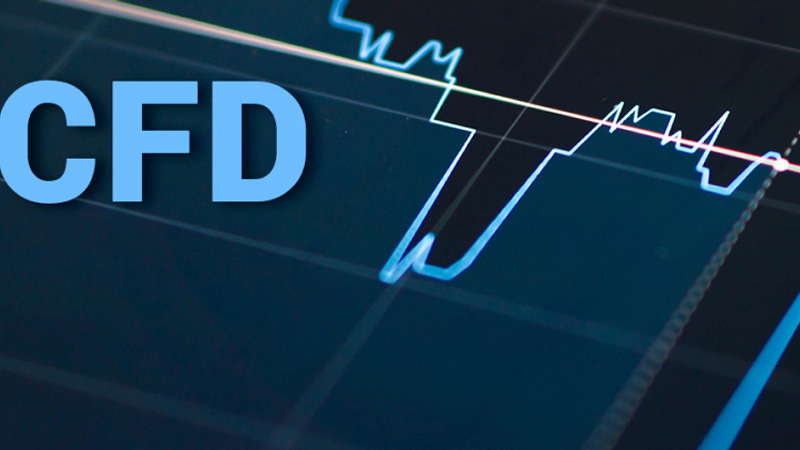Risk management is critical to any successful trading strategy, and CFD traders are no exception. With the potential for high returns comes the risk of substantial losses; an effective risk management plan can help to reduce these risks and ensure that trading strategies remain lucrative over time.
This article explores critical methods CFD traders can use to mitigate risk and maximisepotential returns. By understanding these approaches and making sure they form part of your trading strategy, you can better manage your exposure to market volatility while reducing the likelihood of significant losses.
Set stop losses
Stop losses are an effective way for CFD traders to limit their losses when trading. By placing a stop-loss order, you can set the maximum amount of money you will lose on any trade. Once the market reaches your predetermined level, your position will automatically close, and you will not experience further losses. It is a crucial tool for managing risk with CFD trading by ensuring you know exactly how much you could lose before entering any position. It also helps to prevent emotional trading decisions as trades close out automatically according to pre-set limits.
Correctly setting stop losses is essential to risk management with CFD trading. If the stops are too close, there may not be enough room for the price to move, and your position may be closed prematurely. Finding the right balance between protecting yourself from excessive losses and allowing the market enough room to move before closing a position is essential.
Utilise leverage prudently
Leverage can be a powerful tool for CFD traders looking to increase their returns. By borrowing money from a broker, traders can enter more significant positions with less capital than possible. While this can increase profits exponentially, it also brings additional risks due to the higher level of leveraged exposure.
To mitigate the risks associated with leveraged trading, CFD traders should be careful to only use leverage prudently, which means considering your risk tolerance and trading strategy before deciding on an appropriate leverage ratio. Using a reputable broker who will provide competitive margin rates and protect your funds in case of market volatility is also essential. By being mindful of these considerations, you can ensure that leveraging is used safely and effectively as part of your risk management strategy.
Monitor trends
Monitoring market trends can help CFD traders identify lucrative opportunities and reduce risk exposure. By analysing price movements and tracking the performance of different assets, traders can identify which markets are heading in a particular direction and adjust their positions accordingly. It allows them to maximise potential profits while mitigating risk by avoiding overly volatile markets. Traders can monitor the Saxo Markets here.
Additionally, monitoring trends also help CFD traders to stay ahead of news events that may affect different asset prices. By keeping a close eye on the markets, they can quickly shift their positions if necessary to protect themselves from sudden market conditions changes.
Diversify portfolios
Portfolio diversification is another crucial method for CFD traders looking to reduce their risk exposure. By investing in multiple assets across different markets, sectors and asset classes, traders can spread their risk and minimise the impact of any individual trading position. Diversification also helps reduce overall volatility by balancing gains and losses across different assets.
The key to successful portfolio diversification is to ensure that the chosen assets are uncorrelated, meaning they don’t all rise or fall simultaneously. CFD traders should also be mindful of leverage when diversifying, as too much leverage can increase risk rather than diminish it. By combining these two approaches effectively, CFD traders can significantly reduce their exposure to market volatility while achieving profitable returns over time.
Use hedging
Hedging is another effective tool for CFD traders looking to reduce risk. Hedging involves taking a position in one asset class that is opposite to another position you may have taken in another asset class, thereby offsetting any potential losses. It can effectively mitigate the risks associated with CFD trading, allowing traders to limit their exposure to market volatility without closing out existing positions.
When using hedging, traders should be mindful of this strategy’s impact on their overall returns. Hedging can reduce returns due to the additional costs involved in taking opposing positions, so it is essential to consider whether this will outweigh the risk of exposure before deciding whether this approach suits your circumstances.
The bottom line
CFD trading can be highly advantageous when done correctly. By understanding and utilising the risk management strategies outlined above, CFD traders can protect themselves from significant losses while maximising their potential returns. Through careful consideration of leverage, stop losses, diversification and hedging strategies, traders can ensure that they are well-positioned to capitalise on any market opportunities that arise. With a robust risk management plan, CFD trading is an excellent way for investors to increase their wealth securely.






